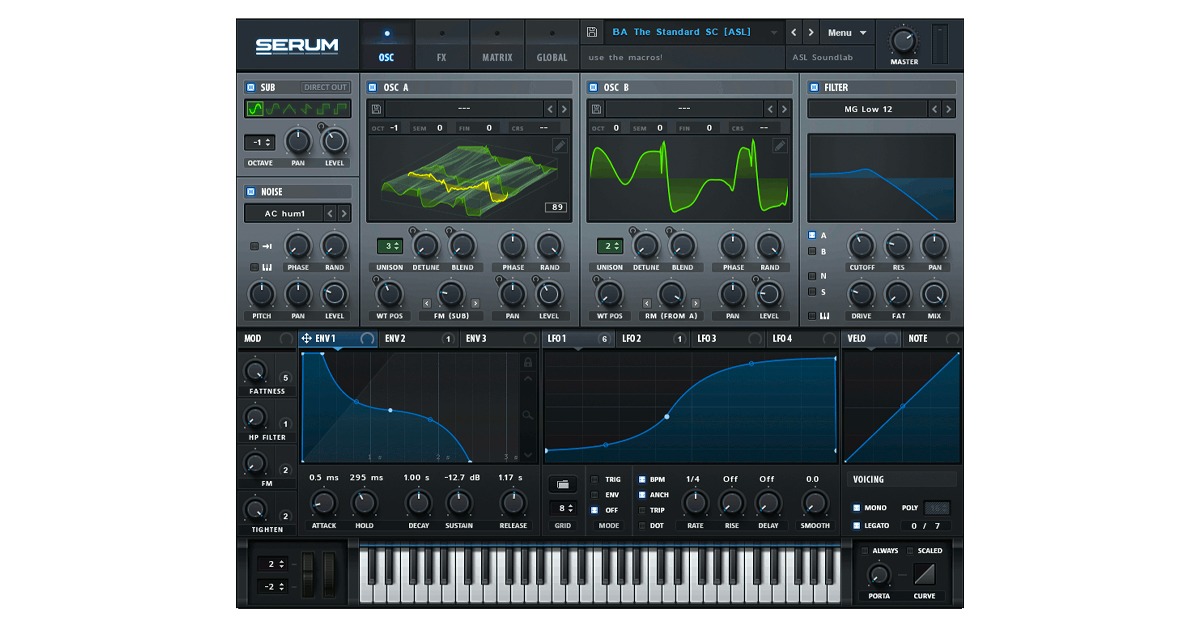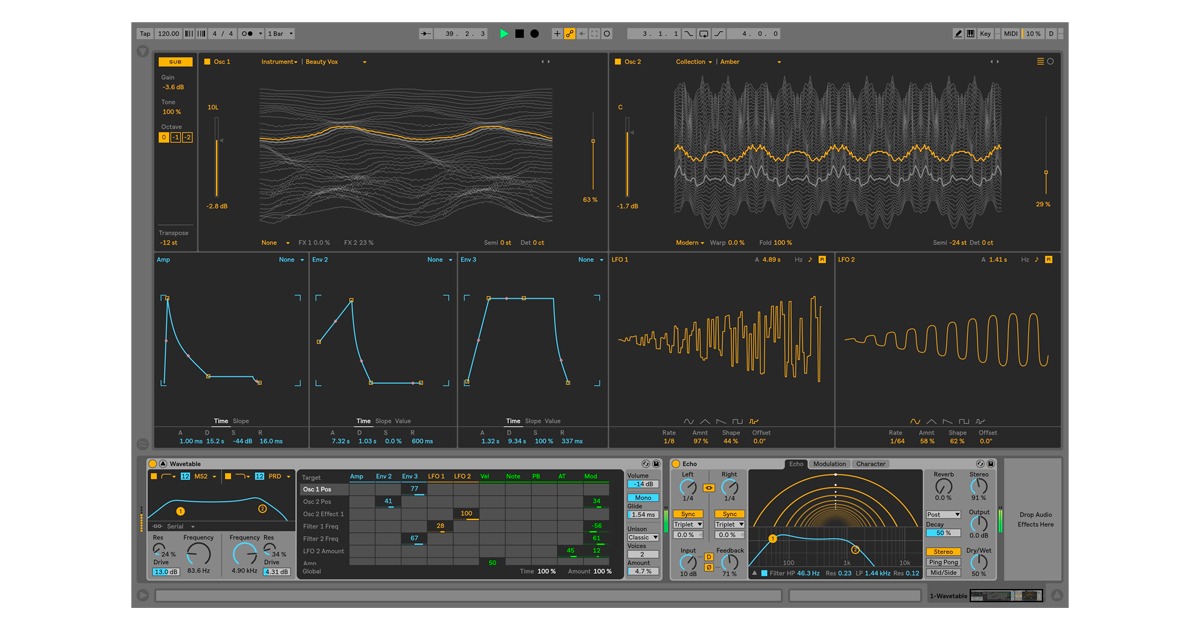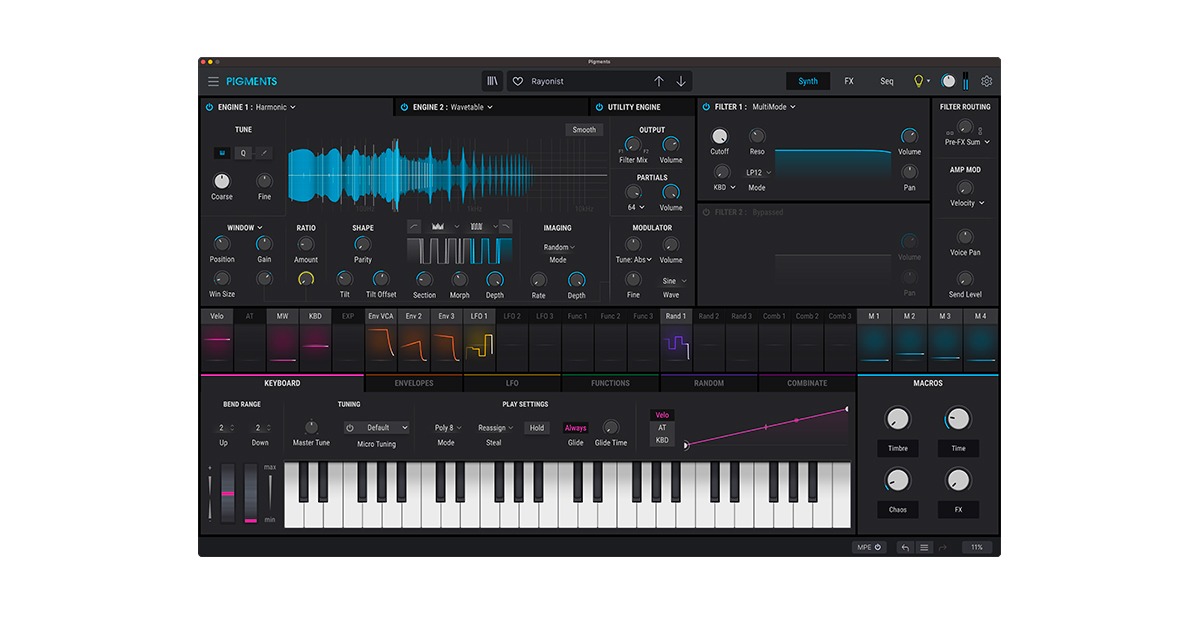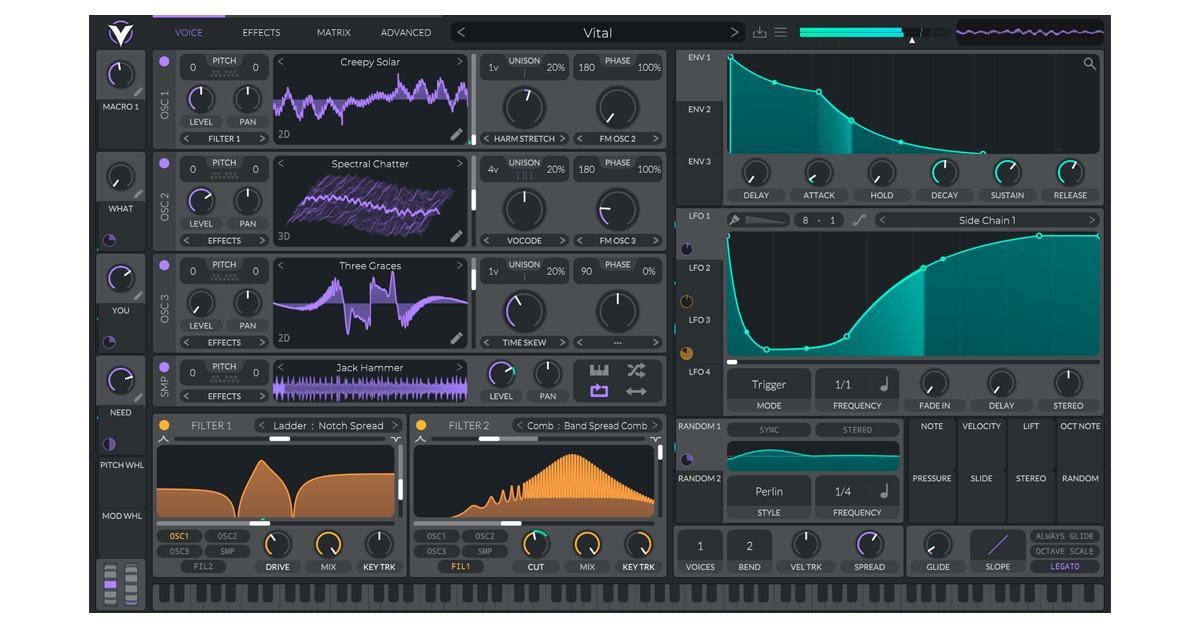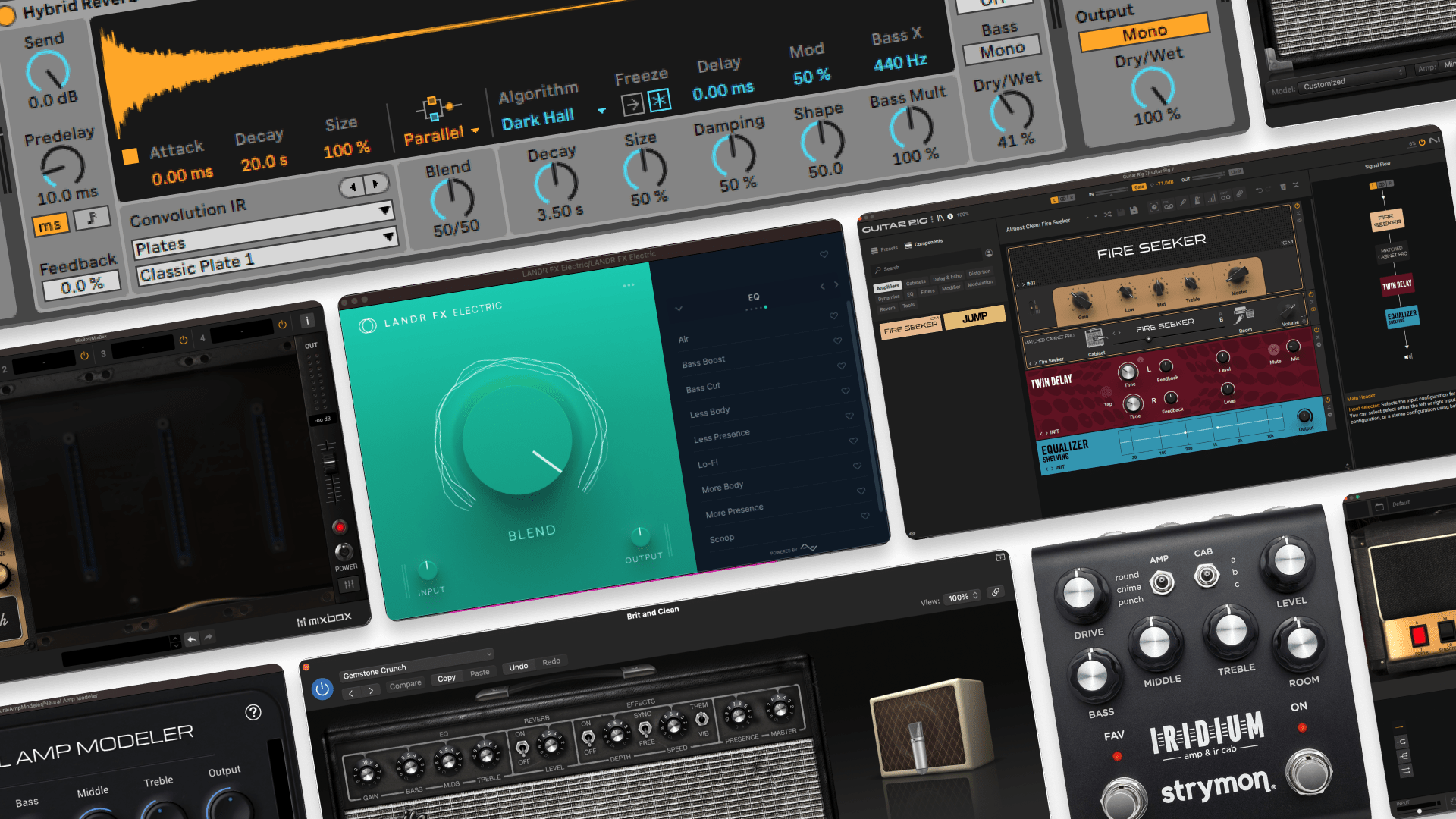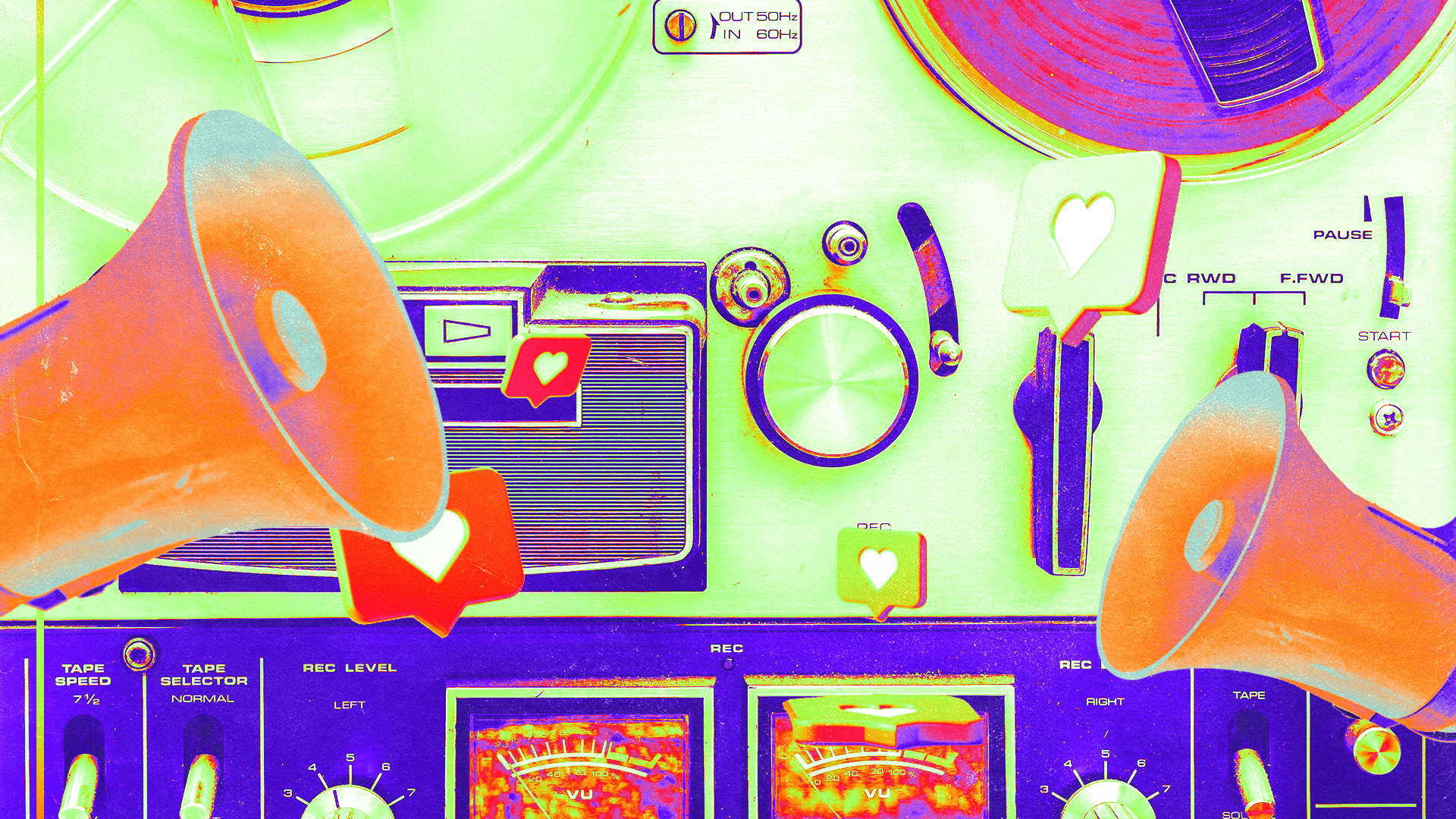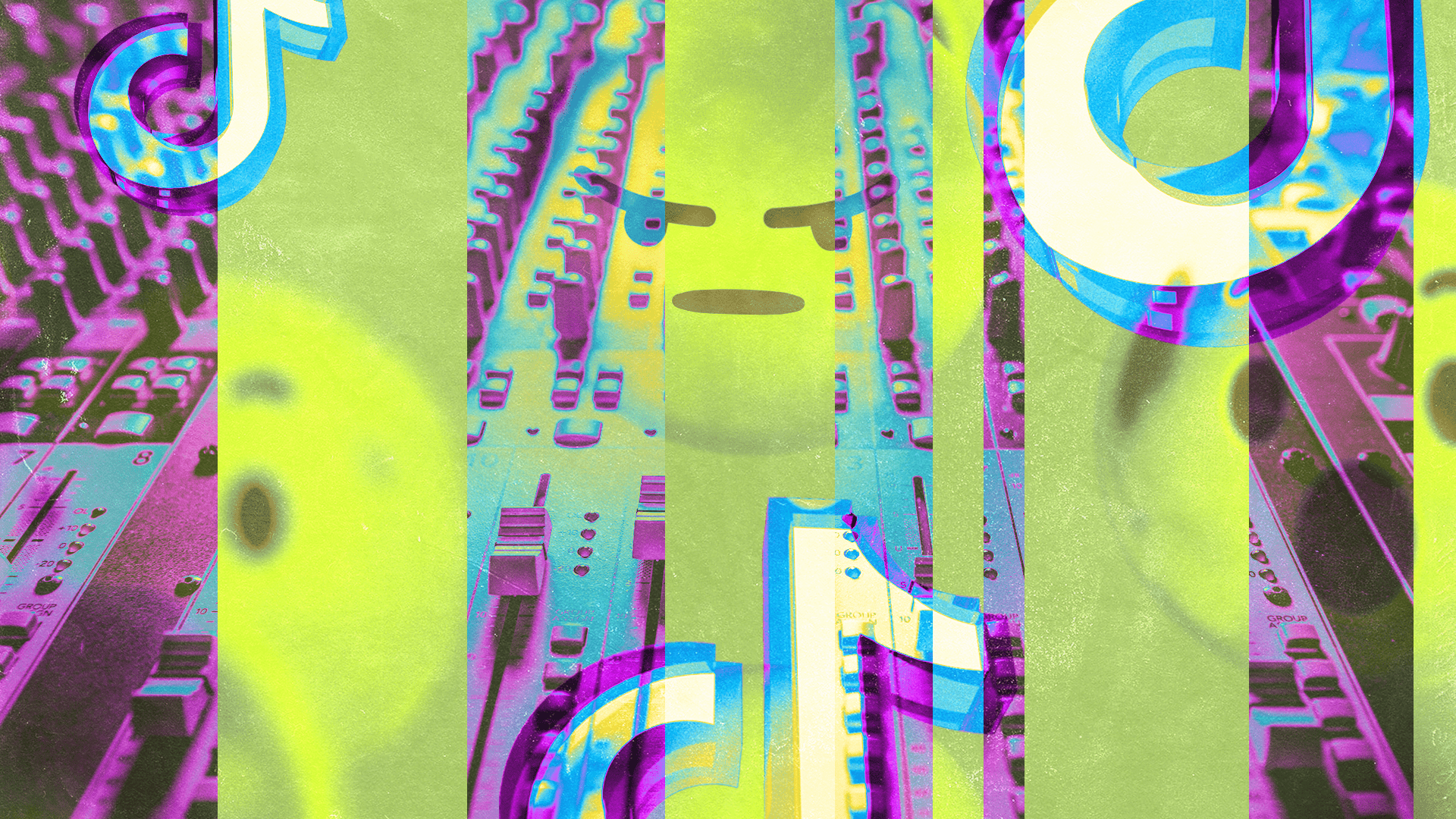
Wavetable Synthesis: The 8 Best Synths For Modern Sounds

Wavetable synthesis is one of the most common methods used in synth plugins and digital synthesizers.
It’s a technique that dates back to the earliest digital hardware synths. But wavetable synthesis still has many unique sounds to offer today.
In fact, this powerful synthesis method is one of the best ways to get fresh, modern sounds into your productions.
In this article I’ll explain what wavetable synthesis is, how it works and the best gear to access its unique sound.
Let’s get started.
What is wavetable synthesis?
Wavetable synthesis is a method of digital sound synthesis that produces an oscillator signal by cycling through a table of values that represent a waveform.
By varying the speed with which it cycles through table entries, the wavetable oscillator can generate different frequencies of periodic waveform.
If that sounds complicated, don’t worry. I’ll break it down even further.
But to start off you’ll need to know a bit about basic subtractive synthesis.
If you need to review the basics, head over to our in-depth guide to brush up:
But if you just need a refresher, here’s the basic flow of an analog subtractive synthesizer.
Instead of electrical components that generate basic waveforms, wavetable synths use a series of values stored in a table.
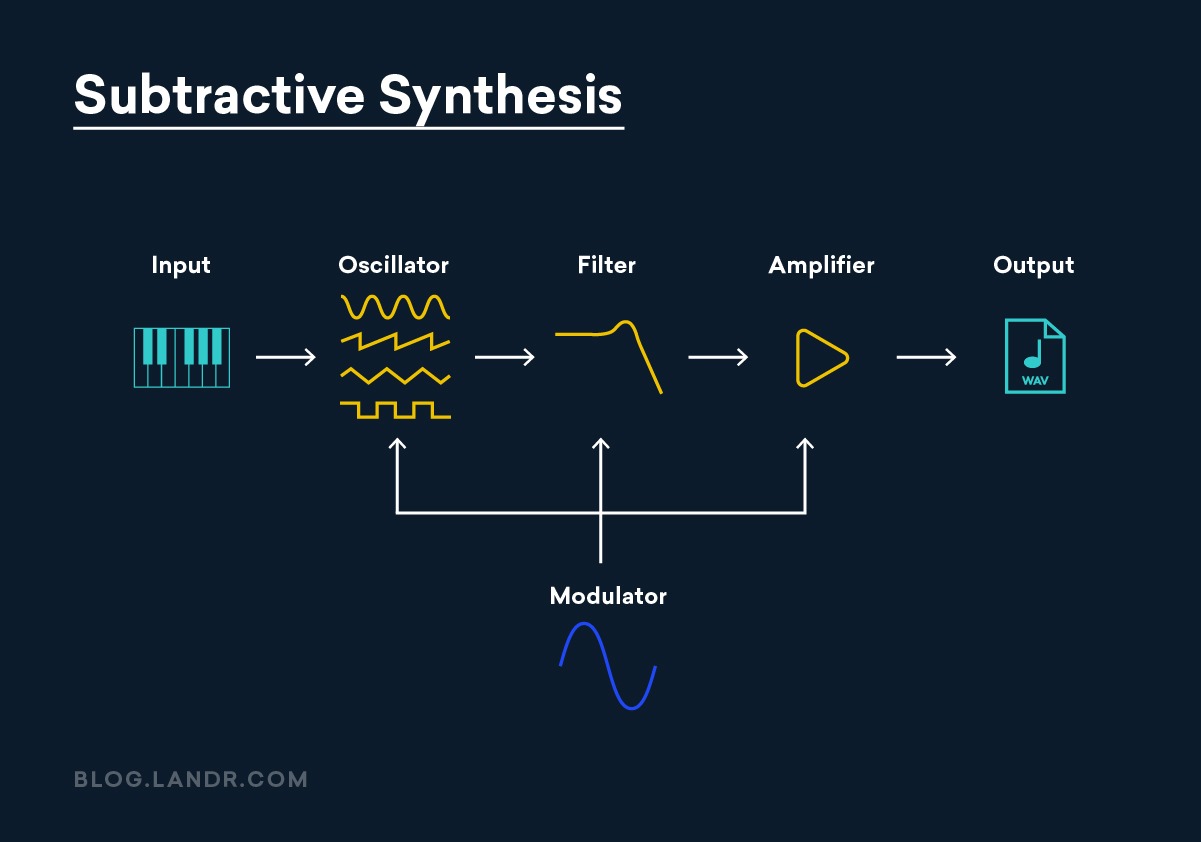
The wavetable oscillator takes the place of the analog VCO in this diagram.
Instead of electrical components that generate basic waveforms, wavetable synths use a series of values stored in a table.
For example, a traditional sawtooth wave might be stored as a file in a table with 256 entries. Each entry represents an amplitude value for that section of the wave.
Cycling through every sample in the table at a rate of 440 full cycles per second would give you a sawtooth wave at 440 Hz!
How can you use wavetable synthesis?
Wavetable synthesis isn’t too different from subtractive synthesis.
You’ll still affect your sound’s amplitude envelope with ADSR and sculpt its frequency balance with a filter.
That means that if you already know your way around the basics of synth sound design you’ll be able to start right away.
But wavetable synthesis can create many more starting oscillator shapes than traditional VCO-style oscillators.
That means you can start with a complex or asymmetrical waveform. It broadens the possibilities for sound design and unique patches with this synthesis type.
Consider wavetable synthesis if you need:
- Brighter or edgier sound than traditional synth waveforms can provide
- Super fast attacks or defined basses that won’t get muddy
- Evolving pads with textures that shift throughout
Hot tip: One of the coolest features of advanced wavetable synths is the ability to morph between oscillator shapes in real time. This is especially exciting when assigned to an LFO or envelope generator.
The 8 best wavetable synths
With the background out of the way, here’s a list of capable instruments that use wavetable synthesis.
Wavetable synthesis can create many more starting oscillator shapes than traditional VCO-style oscillators.
There’s even a free plugin option if you want to experiment without paying too much.
1. Xfer Serum
Xfer Serum is one of the most popular software synthesizers around today.
Its huge sound and deep flexibility make it a first choice for electronic producers.
Not only that, Serum boasts an active community of power users that offer tutorials and preset packs to help you get the most from this powerful synth.
2. Waldorf Blofeld
Legendary builder Waldorf has its roots in the first wavetable instrument ever built.
But the German brand’s most popular modern wavetable unit is the Blofeld.
It’s a little older than others on this list, the Blofeld is still an excellent option for flexible wavetable patch design.
Its unique comb filter can take into physical modelling territory!
3. Ableton Wavetable
If you’re an Ableton user, you won’t have to look far for a great wavetable synth.
Ableton Suite comes with a fantastic take on the technique called…Wavetable.
Ableton Wavetable features all the fresh modern and vintage style sounds of the best paid plugins with Ableton’s familiar interface and native performance.
4. Modal Argon8
On the hardware side, Modal Argon8 is one of the classiest new synths released in the past few years.
With a simple yet powerful interface, Argon8 lets you access the cinematic side of wavetable sounds with ease.
If you’re an Ableton user, you won’t have to look far for a great wavetable synth.
If you’re looking for a stylish digital synth at an accessible price, check out Argon8.
5. Arturia Pigments
Arturia Pigments is a multi-dimensional software synth that relies on multiple synthesis methods for its unique sound.
One of its most powerful features is a robust wavetable engine with the power to “animate, morph and distort through 160 wavetables.”
6. ASM Hydrasynth
ASM Hydrasynth is another newcomer with powerful features and big sound.
It’s a thoroughly modern digital hardware unit with a whopping 219 different waveforms, extensive filter models, 32 modulation matrix slots and many more deep capabilities.
It may sound overwhelming, but Hydrasynth is a sound designer’s dream!
7. Waldorf PPG Wave 3.V
Waldorf’s plugin division has created the definitive digital edition of the one that started it all—the PPG Wave.
The original synth is famous for its pioneering use by Depeche Mode and other 80s synth-pop greats.
Waldorf PPG Wave 3.V brings all the retro-futuristic feel of the original gear to your DAW.
8. Vital Audio Vital
Vital Audio Vital is the spiritual successor to Matt Tytel’s hit freeware synth Helm.
It features spectral oscillator morphing and a unique sample-to-wavetable conversion engine for creating your own sounds from scratch.
A seat at the wavetable
Wavetable synthesis has been around for a while, but it’s still a fun way to get fresh sounds for your tracks.
Whether you’re looking for a new hardware synth for your home studio, or just a new plugin to test in your workflow, one of the synths on this list could be your next piece of gear.
Gear guides, tips, tutorials, inspiration and more—delivered weekly.
Keep up with the LANDR Blog.

